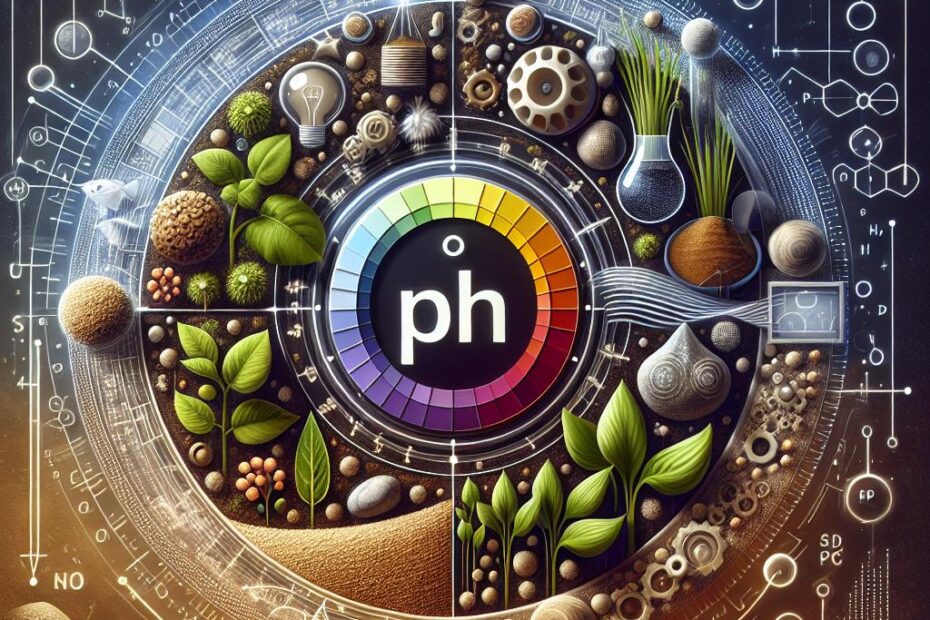The Importance of Soil pH in Nutrient Availability
When it comes to growing healthy plants, one of the most crucial factors to consider is the pH level of the soil. Soil pH plays a significant role in determining the availability of essential nutrients to plants, as it affects the chemical reactions that occur in the soil and the ability of plants to absorb nutrients. In this article, we will explore the relationship between soil pH and nutrient availability, and provide valuable information on how to optimize soil pH for better plant growth.
Understanding Soil pH
Soil pH is a measure of the acidity or alkalinity of the soil, and it is determined by the concentration of hydrogen ions in the soil solution. The pH scale ranges from 0 to 14, with 7 being neutral. A pH below 7 indicates acidic soil, while a pH above 7 indicates alkaline soil. Most plants prefer slightly acidic to neutral soil, with a pH range of 6.0 to 7.5.
Nutrient Availability in Different Soil pH Levels
The availability of essential nutrients to plants is greatly influenced by the pH level of the soil. Different nutrients are more readily available at certain pH levels, while others may become more limited. Here is a breakdown of how soil pH affects the availability of key nutrients:
-
Macronutrients:
- Nitrogen: Nitrogen availability is highest in slightly acidic to neutral soil (pH 6.0-7.0). In alkaline soil, nitrogen may become tied up in forms that are not easily absorbed by plants.
- Phosphorus: Phosphorus availability is optimal in slightly acidic soil (pH 6.0-7.0). Alkaline soil can reduce phosphorus availability to plants.
- Potassium: Potassium availability is not significantly affected by soil pH, but it is generally more available in slightly acidic to neutral soils.
-
Micronutrients:
- Iron: Iron availability is highest in slightly acidic to neutral soil. Alkaline soil can limit iron uptake by plants.
- Zinc: Zinc availability is optimal in slightly acidic soil. Alkaline soil can reduce zinc uptake by plants.
- Manganese: Manganese availability is highest in slightly acidic to neutral soil. Alkaline soil can limit manganese absorption by plants.
Adjusting Soil pH for Better Nutrient Availability
If your soil pH is outside the optimal range for nutrient availability, there are several methods you can use to adjust it:
-
Adding Lime: Lime can be added to acidic soil to raise the pH level and make it more alkaline. This can help improve the availability of certain nutrients like phosphorus and potassium.
-
Applying Sulfur: Sulfur can be added to alkaline soil to lower the pH level and make it more acidic. This can help improve the availability of nutrients like iron and zinc.
-
Using Organic Matter: Adding organic matter such as compost or manure to the soil can help buffer the pH and improve nutrient availability over time.
-
Testing and Monitoring: Regularly testing the pH of your soil and monitoring nutrient levels can help you make informed decisions about adjustments to optimize nutrient availability for your plants.
Benefits of Optimizing Soil pH for Nutrient Availability
Optimizing soil pH for better nutrient availability can lead to several benefits for your plants, including:
- Improved Growth: Plants are able to absorb essential nutrients more efficiently, leading to healthier and more vigorous growth.
- Increased Yield: Better nutrient availability can result in higher yields of fruits, vegetables, and flowers.
- Reduced Disease Susceptibility: Well-nourished plants are more resistant to pests and diseases, leading to overall plant health.
Conclusion
In conclusion, soil pH plays a crucial role in determining the availability of essential nutrients to plants. By understanding the relationship between soil pH and nutrient availability, and taking steps to adjust and optimize soil pH levels, you can ensure better plant growth and overall health. Remember to regularly test and monitor your soil pH, and make adjustments as needed to provide your plants with the nutrients they need to thrive. With proper soil pH management, you can create a healthy and vibrant garden or landscape that flourishes year after year.
